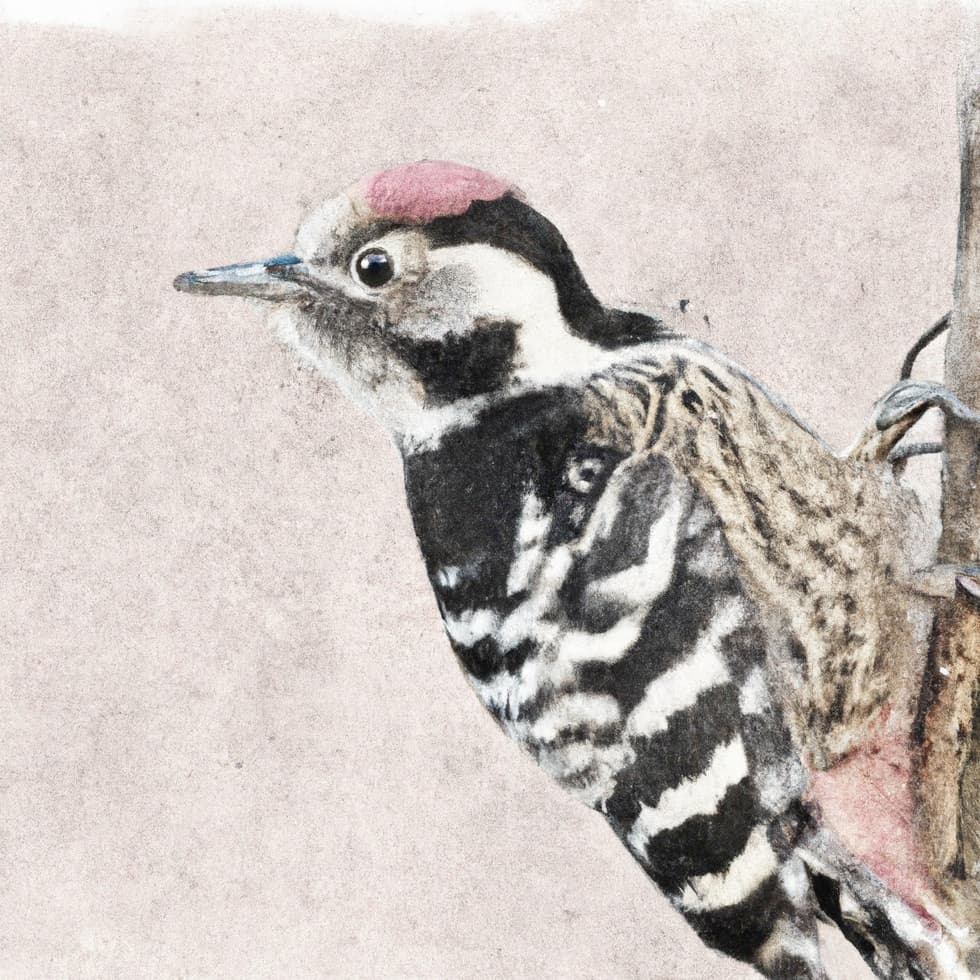
The Lesser Spotted Woodpecker may be small, but it sure does pack a punch! This little woodpecker is one of the smallest in the world, but don’t let its size fool you. In this blog, we’ll take a closer look at 27 curious facts about the Lesser Spotted Woodpecker and discover why it’s a true featherweight champion!
27 Curious Facts about the Lesser Spotted Woodpecker
- The Lesser Spotted Woodpecker is the smallest woodpecker in Europe and one of the smallest in the world.
- They have a distinctive black and white plumage, with red on the head of the male.
- Lesser Spotted Woodpeckers are known for their impressive drumming skills, and can hammer on wood up to 20 times per second.
- They have a small, compact body and short, rounded wings, which are adapted for life in the trees.
- The collective noun for a group of Lesser Spotted Woodpeckers is a “descent.”
- Lesser Spotted Woodpeckers are primarily insectivorous and feed on a wide range of insects, including ants, beetles, and spiders.
- They have a relatively short, stiff tail that helps them to manoeuvre in the trees.
- Lesser Spotted Woodpeckers are able to breed at a young age, with some individuals breeding in their first year.
- They are able to recognise individual members of their family and will often return to the same areas to forage and roost.
- Lesser Spotted Woodpeckers are known to engage in courtship displays, in which the male will drum on a resonant object to attract a mate.
- They are able to form monogamous pair bonds that can last for multiple breeding seasons.
- In some cultures, woodpeckers are considered to be a symbol of opportunity and change.
- The oldest known woodpecker fossil dates back to the Eocene epoch, around 50 million years ago.
- Lesser Spotted Woodpeckers are found throughout much of Europe, including the UK, France, and Spain.
- They are able to blend in with their surroundings and are often difficult to spot in the wild.
- Lesser Spotted Woodpeckers are vulnerable to predation by a wide range of animals, including larger birds of prey, snakes, and mammals.
- They are important insect predators and play a vital role in controlling insect populations in their habitat.
- Lesser Spotted Woodpeckers are known to nest in a variety of locations, including tree cavities and old woodpecker holes.
- They have been featured in a variety of cultural works, including literature, poetry, and art.
- Lesser Spotted Woodpeckers are able to navigate using landmarks and visual cues in their environment.
- They have a relatively long lifespan for a bird of their size, with some individuals living up to 8 years in the wild.
- Lesser Spotted Woodpeckers have a unique system of vocalisation that allows them to communicate with their mates and other members of their family.
- They are able to feed on a wide range of prey, including insects, spiders, and other small invertebrates.
- Lesser Spotted Woodpeckers are known to roost in small groups during the non-breeding season.
- They are able to survive in a wide range of habitats, from urban areas to rural woodlands.
- Lesser Spotted Woodpeckers are a key indicator species for the health of their habitat, and their presence is often used as a measure of ecosystem health.
- Despite their name, these woodpeckers are actually not spotted at all, but rather have a striped pattern on their wings and back.
Where to Find the Lesser Spotted Woodpecker
The Lesser Spotted Woodpecker is found throughout much of Europe, including the UK, France, and Spain. They are commonly found in a wide range of woodland habitats, including deciduous, coniferous, and mixed forests. They are particularly fond of areas with a mix of mature trees, deadwood, and shrubs, which provides suitable foraging and nesting habitat.
In urban areas, Lesser Spotted Woodpeckers are less common but can be found in parks and gardens with mature trees and ample insect populations. They are also found in a variety of other habitats, including wetlands, river valleys, and hedgerows.
Feeding the Lesser Spotted Woodpecker
Lesser Spotted Woodpeckers are primarily insectivorous and feed on a wide range of insects, including ants, beetles, and spiders. Suppose you are interested in feeding Lesser Spotted Woodpeckers in your local area. In that case, it is important to provide them with a suitable habitat that includes mature trees, deadwood, and ample insect populations.
It is also important to avoid feeding them food that is harmful to their health, such as processed foods or bread.
Lesser Spotted Woodpeckers may also feed on small invertebrates and other insects, particularly during the non-breeding season.
Final Thoughts
The Lesser Spotted Woodpecker may be small, but it is a true featherweight champion of the bird world. With its distinctive markings and impressive drumming skills, the Lesser Spotted Woodpecker is a favourite of many bird enthusiasts. Whether you are a seasoned birdwatcher or simply appreciate the natural world, the Lesser Spotted Woodpecker is a species that is sure to captivate and intrigue. So why not take a moment to appreciate the beauty of these amazing birds and perhaps even provide them with suitable habitats in your local area? With their important contributions to the ecosystem and their unique characteristics, Lesser Spotted Woodpeckers truly are a treasure of the bird world.